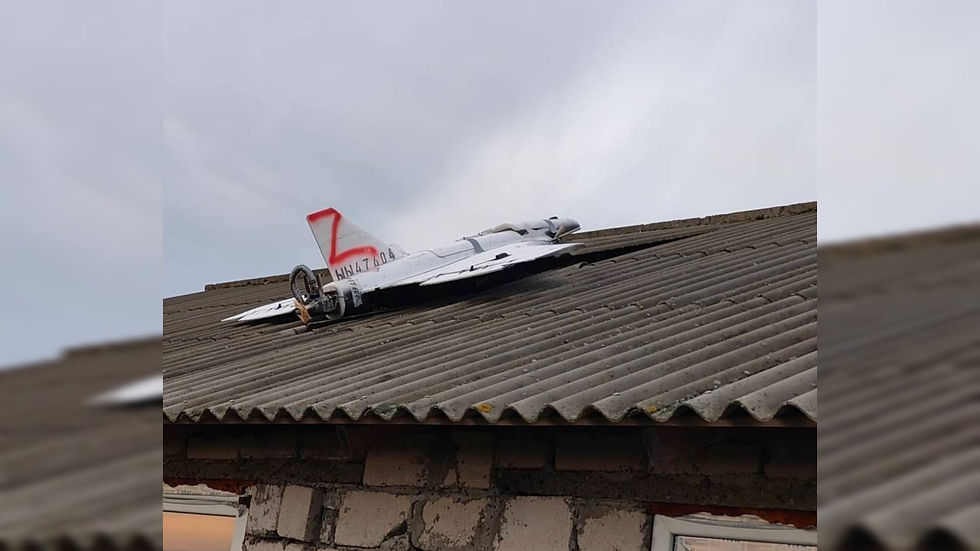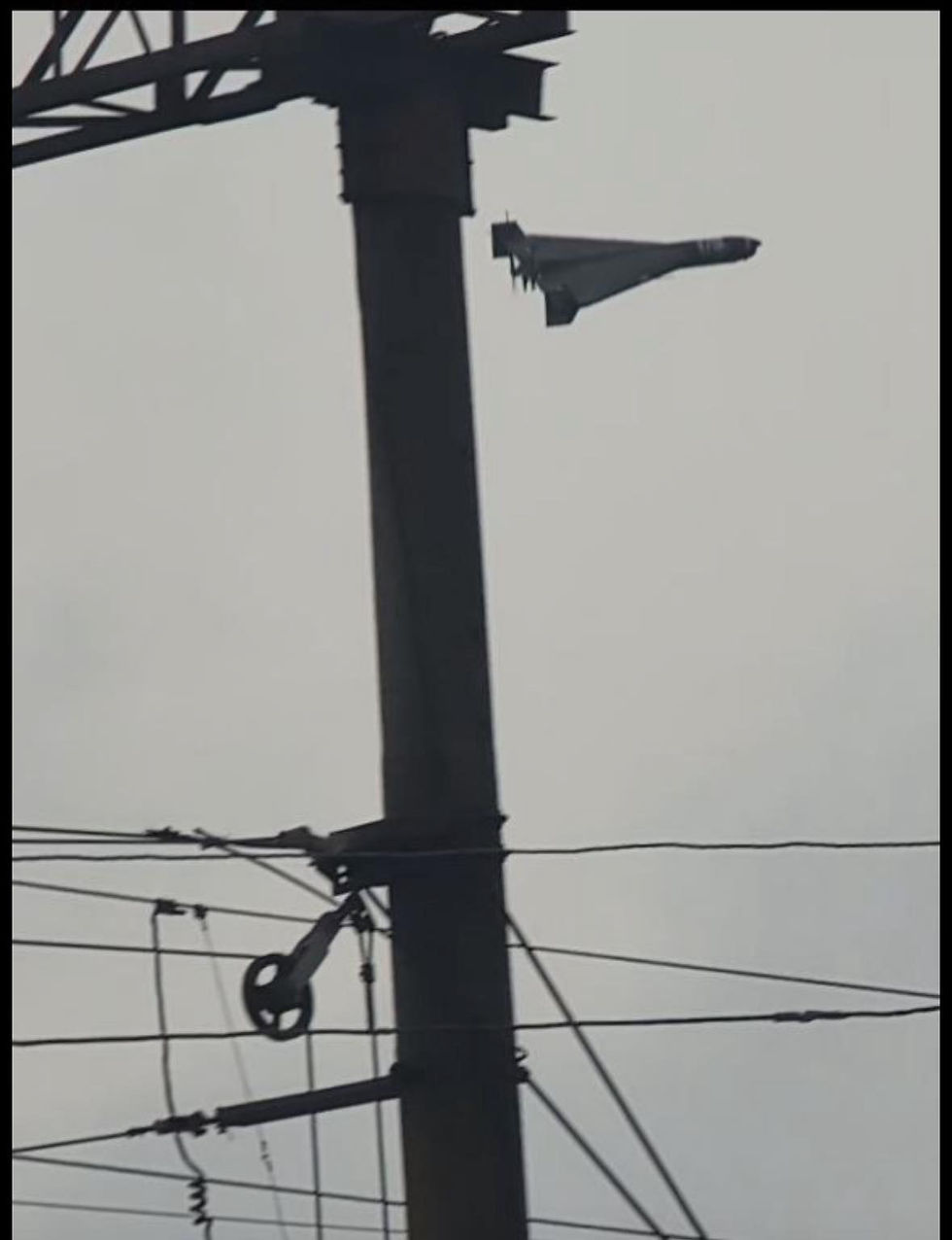The Phony War: Ukraine and Russia’s Decoy Drones
- Res Publica

- May 16
- 4 min read
Ukraine and Russia are locked in a race to combat ever-more sophisticated drone attacks, and to spot the decoys sent to deceive their defenses.

Source: 8th Special Forces Regiment of Armed Forces of Ukraine
Kyiv’s drones have hit targets ever deeper into Russian territory in the first months of 2025, destroying oil refineries, airfields, and crippling infrastructure that fuels Russia’s war machine. Ukraine flexed its growing strike capabilities in March, hitting Moscow in what the city’s mayor described as the “largest drone attack” of the war, and Russia’s air defense is scrambling to adapt.
At the heart of the operations is the 14th Unmanned Aerial Vehicle (UAV) Regiment, which orchestrates large-scale, long-range drone assaults. The unit initially worked with civilian equipment and minimal training, but has evolved into Ukraine’s first specialized deep-strike drone unit.
Its attacks are coordinated with multiple other units, and together they launch hundreds of drones from different sites to overwhelm Russian defenses.
Each long-range strike drone costs about $200,000 and can hit targets more than 1,000 miles (1,600km) inside Russia. Ukraine is aiming to produce around 30,000 in 2025. At the same time, it is producing thousands of decoy drones to help them break through. Some of the decoy drones can cost as little as a few thousand dollars.
“For the operation to be successful, we need to launch decoys too to get across the contact line, where the most intense air defense is,” explained Casper, one of the commanders leading the long-range drone strikes. “We use the decoys to make a corridor for ourselves.”
Ukraine is doing the same at sea, deploying swarms of decoy drones alongside waterborne vehicles like the Magura V5 to overwhelm Russian radar and clear the way for deadly strikes in the Black Sea.
And it’s a technique being used by both sides. “Many of the drones Russia launches against Ukraine are decoys,” said Serhii Kuzan, chairman of the Ukrainian Security and Cooperation Center and former Ministry of Defense adviser. “They are equipped with so-called Luneberg lenses, which increase their radar signature to appear larger, mimicking the appearance of cruise missiles or other aerial threats.”
Moscow and Kyiv are racing to counter technology with technology as each side refines its hardware and software to combat the latest innovations by their opponents.
“The technology must constantly be upgraded,” Kuzan said. “This, in turn, increases the cost and affects the scale of production. Their use is growing more frequent.”
Achieving surprise through deception, known as maskirovka, was a key element of Soviet and later Russian military doctrine. Extensively employing camouflage and decoys, Soviet forces made deception practice mandatory before major operations, especially during World War II on the Eastern Front, and it is a discipline well remembered by both sides in the current conflict.
Samuel Bendett, a senior fellow at the Center for a New American Security, said Russia has used decoys to accompany attack drones, following a pattern that started in the opening weeks of the full-scale invasion.
“Decoys force the Ukrainian defenders to shoot them down,” he said, ultimately allowing the Russians “to identify air defense locations and units that can be either bypassed or hit by follow-on strikes.”
Distinguishing between real and fake drones in the heat of an attack is extremely difficult, Bendett added. This pushes Ukraine to expend limited resources on every incoming UAV, which is exactly what the Russians want.
Emerging technologies, like artificial intelligence and machine learning, could eventually help defenders tell decoys apart from real drones by analyzing variables such as drone size, motor sound, and flight patterns, he said.
Moscow is also working to develop better AI to allow for the coordinated swarming by decoys.
“Russia has made extensive use of decoy UAVs in their mass attacks of Shahed-136 and Geran-2 UAVs on Ukraine, mass producing the ‘Gerbera’ UAV for just this purpose,” said Roy Gardiner, an open-source weapons researcher. “Gerbera is smaller and cheaper, but has radar reflecting devices installed to mimic the Shahed to distract and saturate Ukrainian air defenses.”
Russian drones use imported electronics from China, the US, Switzerland, and Taiwan, demonstrating the need for better export controls to help protect Ukraine.
In the absence of such international support, on April 23, Kyiv struck a drone manufacturing facility in Russia’s Yelabuga district, about 650 miles from the Ukrainian border. The factory was producing around 300 combat drones a day, including Iranian-designed Shahed and Russian-made Geran UAVs.
With Ukraine facing a shortage of air defense missiles and a rising number of incoming Shaheds, Gardiner said the use of decoys will enable Russia to carry out more successful strikes.
And it’s a problem for NATO too. “Our adversaries use $10,000 one-way drones that we shoot down with $2 million missiles,” General Bryan P. Fenton, commander of US Special Operations Command, told Congress. “That cost-benefit curve is upside down.”
Decoy drones not only drain air defense resources and ammunition but also help the enemy locate fire teams, missile systems, radar stations, and other important assets through reconnaissance.
“Air defense is undergoing perhaps the biggest transformation,” said Gen. Valerii Zaluzhnyi, Ukraine’s former commander-in-chief. “The emergence of a large number of small and cheap drones has made the use of extremely expensive missiles for air defense systems economically impractical.”
Ukraine now produces 80%–90% of the drones used by the 14th UAV Regiment, and their capabilities surpass many Western equivalents, largely as a result of rapid feedback from the battlefield.
“At the start, it was the other way round,” Casper said. “But foreign models are like Toyotas now, while Ukrainian ones are like Mercedes. Ours are just leagues ahead.”
As Russia’s invasion grinds on, Ukraine’s survival increasingly depends on speed, innovation, and deception. In fighting a much larger and better-resourced adversary, Kyiv must leverage asymmetrical warfare wherever possible, gaining a tactical edge and outsmarting the enemy at every opportunity.
By David Kirichenko. David Kirichenko is a freelance journalist and an Associate Research Fellow at the Henry Jackson Society. Article first time published on CEPA web page. Prepared for publication by volunteers from the Res Publica - The Center for Civil Resistance.





Comments